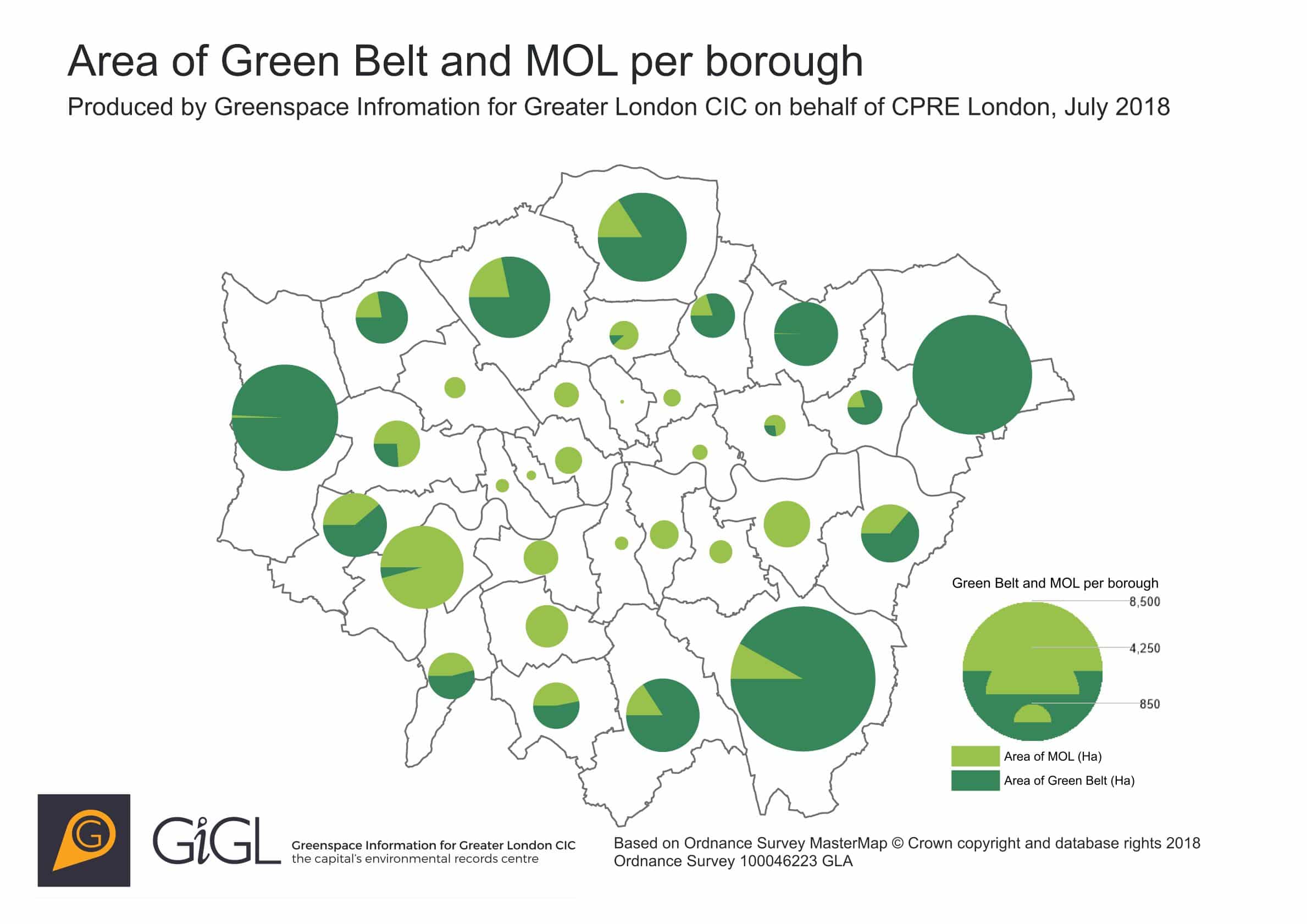London’s Green Belt and Metropolitan Open Land (MOL) designations have been among the most successful aspects of the post-war planning framework. Their core purpose is to prevent urban sprawl, and these protections have been an effective constraint on uncontrolled urban development. They play a major role in encouraging regeneration and the better use of existing developed land, while also providing opportunities for Londoners to access green spaces and enjoy the benefits they offer in terms of health and wellbeing.
Green Belt
Green Belt is a well-known designation applied to undeveloped land around cities to prevent the spread of urbanisation, encourage re-use of previously developed sites and maintain the distinct nature of towns and cities.
Metropolitan Open Land (MOL)
MOL is strategic open land within the urban area. It receives less publicity than Green Belt, but has equal legal status; it is a designation that protects open land within the city, as opposed to around the edge. MOL is specific to London, and can be applied to open space that contributes to the structure of the city, provides open air facilities for sport and recreation, contains features of historic or biodiversity value, and/or forms part of the green infrastructure network.
Both Green Belt and MOL are designated by London’s 32 Boroughs plus the London Legacy Development Corporation (LLDC) and The Old Oak and Park Royal Development Corporation (OPDC). The City of London has no Green Belt or MOL within its boundary.
GiGL manages London-wide datasets of Green Belt and MOL. These are updated when Local Planning Authorities inform GiGL of changes made in their Local Plans. You can read more on the history of these datasets, including a joint GiGL and the London Branch of the Campaign to Protect Rural England (CPRE London) project, in previous GiGLer articles here and here.

Protection
Exceptional circumstances are required to justify either the extension or de-designation of the Green Belt or MOL through the preparation or review of a Local Plan. Development proposals that would harm either should be refused except where very special circumstances exist. Boroughs should work with partners to enhance the quality and range of uses of MOL and Green Belt.
Benefits
The main benefit comes from the increased protection and enhancement of London’s open environment. Both designations improve Londoners’ quality of life by providing localities which offer sporting and leisure use, heritage value, biodiversity, food growing, and health benefits through encouraging walking, running and other physical activity. It also helps to combat the urban heat island effect and, of course, contain the further expansion of built development while driving the re-use of London’s previously developed brownfield land.
Source: Policy G2 London’s Green Belt and Policy G3 Metropolitan Open Land in the London Plan 2021.
